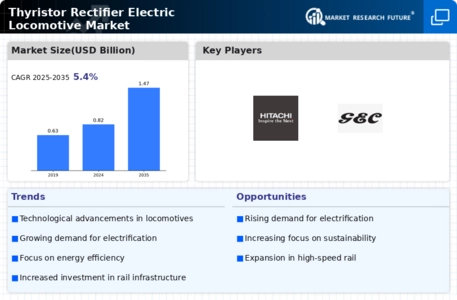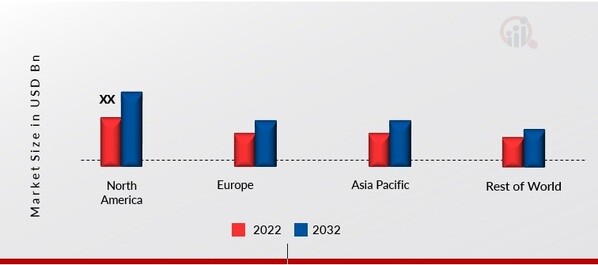Market Trends
Key Emerging Trends in the Thyristor Rectifier Electric Locomotive Market
The Thyristor Rectifier Electric Locomotive Market is witnessing several notable market trends that are shaping the industry's trajectory. One prominent trend is the increasing adoption of thyristor rectifier technology for electric locomotives. Thyristor rectifiers provide efficient and reliable control of electric traction systems, making them a preferred choice for modern rail transport. The demand for electric locomotives equipped with thyristor rectifiers is rising globally, driven by the need for energy-efficient and environmentally friendly transportation solutions.
Another significant trend in the market is the emphasis on sustainability and environmental considerations. Governments and railway operators worldwide are prioritizing the electrification of rail networks to reduce carbon emissions and mitigate the environmental impact of transportation. Thyristor rectifier electric locomotives play a crucial role in this trend, offering a cleaner alternative to traditional diesel-powered trains. This shift aligns with broader efforts to promote sustainable and eco-friendly modes of transit.
Advancements in technology are influencing market trends, with continuous innovations in thyristor rectifier systems. Manufacturers are focusing on developing more advanced and efficient thyristor rectifier solutions, contributing to improved overall performance and energy efficiency of electric locomotives. These technological enhancements not only enhance the competitiveness of manufacturers but also cater to the growing demand for state-of-the-art solutions in the railway industry.
The integration of digitalization and smart technologies is another noteworthy trend in the Thyristor Rectifier Electric Locomotive Market. The incorporation of digital control systems and connectivity features allows for better monitoring, maintenance, and control of thyristor rectifier electric locomotives. This trend enhances operational efficiency, reduces downtime, and provides valuable data for predictive maintenance, contributing to a more reliable and cost-effective railway transportation system.
Market trends also reflect a growing interest in high-speed rail transportation. Many regions are investing in high-speed rail projects, and electric locomotives with advanced thyristor rectifiers are integral to these initiatives. The ability of thyristor rectifiers to deliver precise control of electric traction systems is particularly advantageous in high-speed rail applications, ensuring safe and efficient operation at elevated speeds.
The market is also witnessing an increased focus on modular and customizable solutions. Thyristor rectifier systems that can be adapted to different power requirements and locomotive configurations offer flexibility to railway operators. This trend addresses the diverse needs of various rail applications, including freight transport, passenger services, and urban transit, fostering a more versatile and adaptable market.
Collaborations and partnerships between manufacturers and technology providers are emerging as a key trend in the Thyristor Rectifier Electric Locomotive Market. By joining forces, companies can leverage their respective expertise to accelerate innovation, reduce development costs, and bring advanced thyristor rectifier electric locomotives to market more efficiently. These collaborations contribute to a collaborative and synergistic industry ecosystem.
Market trends also highlight the importance of lifecycle cost considerations in purchasing decisions. Railway operators are increasingly evaluating the total cost of ownership, including maintenance, energy consumption, and operational efficiency, when choosing electric locomotives with thyristor rectifiers. This trend emphasizes the significance of providing not just technologically advanced solutions but also cost-effective and sustainable options that align with long-term financial considerations.





Leave a Comment